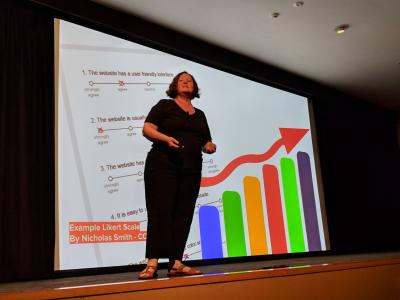I love free software, but sometimes, I feel, that free software does not love me.
Why is it so hard to use? Why is it still so buggy? Why do the things I can do simply with other tools, take so much effort? Why is the documentation so inscrutable? Why have all the config settings been removed from the GUI? Why does this HowTo assume I can find a config file, and edit it with VI? Do I have to learn to use VI before I can stop my window manager getting in the way of the application I’m trying to use?
Tis a mystery. Or is it?
It’s fair to say, that the Free Software community is still largely made up of blokes, who are software developers. The idea that “user centered design” is a “Good Thing” is not evenly distributed. In fact, some seem to think it’s not a good thing at all, “patches welcome” they say, “go fix it yourself”.
The web community on the other hand, has discovered that the key to their success is understanding and meeting the needs of the people who use their software. Ideological purity is great, but enabling people to meet their objectives, is better.
As technologists, we get excited by technology. Of course we do! Technology is modern magic. And we are wizards. It’s wonderful. But the people who use our software are not necessarily interested in the tech itself, they probably just want to use it to get something done. They probably don’t even care what language it’s written in.
Let’s say a customer walks into a hardware store and says they want a drill. Or perhaps they walk in and stand in front of a shelf simply contemplating a dizzying array of drills, drill bits and other accessories. Which one is right for the job they wonder. Should I get a cordless one? Will I really need diamond tipped drill bits?
There's a technique called the 5 Why's that's useful to get under the surface of a requirement. The idea is, you keep asking why until you uncover the real reason for a request, need, feature or widget. For example, we could ask this customer...
Why do you want this drill? To drill a hole.
Why? To hang a picture on my wall.
Why? To be able to share and enjoy this amazing photo from my recent holiday.
So we discover our customer did not, in fact, want a drill. Our customer wanted to express something about their identity by decorating their home. So telling them all about the voltage of the drill, and the huge range of drill bits available, may have helped them choose the right drill for the job, but if we stop to understand the job in the first place, we’re more likely to be able to help that person get what they need to get their job done.
User stories are one way we can explore the “Why” behind the software we build. Check out my talk from the Developers Developers miniconf at linux.conf.au on Monday “Turning stories, into software.”
References
- http://agilereference.org/
- http://www.subcide.com/articles/how-to-write-meaningful-user-stories/
- http://jpattonassociates.com/user-story-mapping/
- http://www.wunderkraut.com/blog/iterations-for-drupal-development/2015-01-08
- http://www.romanpichler.com/blog/personas-epics-user-stories/
- https://www.drupal.org/resource-guides/social-media-and-drupal
- http://xp123.com/articles/invest-in-good-stories-and-smart-tasks/
- http://tiny.cc/story-invest
- http://www.agile42.com/en/blog/2013/12/11/cynefin-framework/
Photo by Josh Simmons

